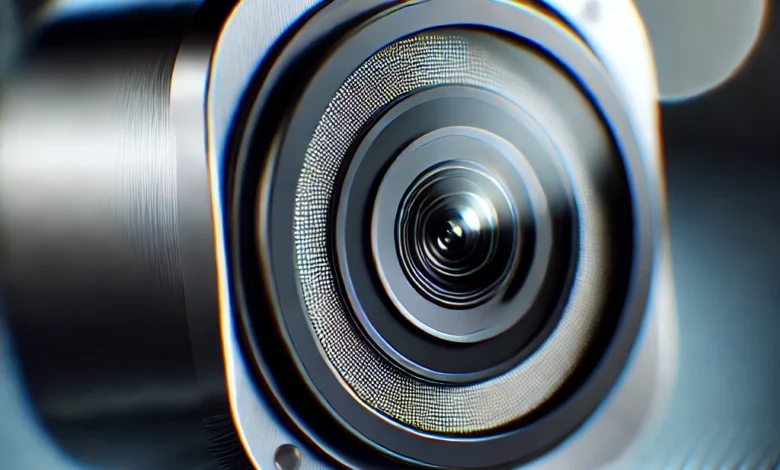Unlock Stunning Image Quality with High-Resolution Camera Modules

In an age where visual content is everywhere, from social media feeds to professional portfolios, image quality has never been more important. High-resolution camera modules are at the forefront of this revolution, enabling stunning visuals that capture every detail. Whether you’re a professional photographer, a drone enthusiast, or someone who simply enjoys taking photos with your smartphone, these compact yet powerful devices are changing the way we perceive and create visual media.
The heart of this shift lies in the high resolution camera module, a component responsible for elevating the quality of images we see on our screens. But what makes this technology so special, and why is it considered such a game-changer in so many industries? Let’s dive into the world of high-resolution camera modules and uncover how they work, where they’re used, and why they’re indispensable in today’s image-driven world.
Understanding the Basics of High-Resolution Camera Modules
At its core, a high-resolution camera module is a compact assembly designed to capture images with exceptional clarity. It consists of several critical elements, including the lens, image sensor, and image processor, all of which work together to produce sharp, high-quality visuals.
Unlike standard camera systems, high-resolution camera modules come equipped with a higher number of pixels on their sensors. This increased pixel count allows for more detailed images, better zoom functionality, and greater flexibility in post-production editing. This higher resolution not only improves sharpness but also makes it easier to enlarge images without losing clarity, ensuring crispness across varying scales.
High Resolution Camera Module: How It Elevates Image Quality
So, what exactly happens when you opt for a device with a high-resolution camera module? For one, you can expect your photos and videos to capture even the most minute details. Whether it’s the texture of a flower petal, the fine lines on a person’s face, or the intricate patterns in architecture, high resolution ensures nothing is lost in translation from reality to digital representation.
Moreover, high-resolution camera modules excel in dynamic range, meaning they are better at capturing extremes in lighting—from the brightest whites to the deepest blacks—without losing detail. This is particularly useful in photography, where lighting conditions can drastically alter the outcome of an image.

To buy high resolution camera module, visit https://www.optivistech.com/
Applications of High-Resolution Camera Modules
The range of applications for high-resolution camera modules is vast. Their integration has expanded far beyond just traditional cameras. Let’s explore a few key areas:
Mobile Phones
In the realm of smartphones, high-resolution camera modules have become an essential selling point. Modern phones now come equipped with powerful lenses capable of rivaling professional cameras. This has democratized photography, enabling anyone with a smartphone to capture high-quality images effortlessly.
Drones
Drones equipped with high-resolution camera modules have opened up new possibilities for aerial photography and videography. Whether it’s for filmmaking, real estate, or environmental monitoring, high-res cameras provide the clarity needed to capture landscapes and cityscapes from above, offering perspectives that were previously inaccessible.
Security Cameras
In surveillance, high-resolution camera modules are indispensable. High-res images provide clearer identification, better facial recognition, and superior detail in security footage. This is especially useful for monitoring large areas where zooming in without losing clarity is crucial.
Industrial Uses
High-resolution camera modules have transformed various industries, particularly in manufacturing. They are used for precision inspection, ensuring products meet exact specifications by detecting even the smallest defects. In automation, these cameras are used for real-time analysis, improving the efficiency of processes across multiple sectors.
The Impact of High-Resolution Camera Modules on Mobile Photography
Mobile photography has been revolutionized by the advent of high-resolution camera modules. A few years ago, it was nearly impossible to get DSLR-quality images on your phone. However, advancements in sensor technology have significantly narrowed the gap between traditional cameras and smartphone cameras.
Today’s mobile devices use high-res camera modules that allow for features like optical zoom, portrait modes, and ultra-high-definition (UHD) video recording. These innovations mean that high-quality content creation is no longer limited to professionals. The average user can now take stunning photos that can be shared instantly, further fueling the growth of platforms like Instagram and TikTok.
Security and Surveillance: How High-Resolution Modules Enhance Safety
In the field of security, high-resolution camera modules are critical for maintaining safety and order. Whether monitoring public spaces, private properties, or industrial sites, these modules provide the clarity needed to identify individuals, license plates, and even small objects. This increased resolution is particularly beneficial in scenarios where traditional cameras would struggle—such as at night or in poor lighting conditions.
Additionally, advancements in low-light performance and motion tracking make high-res cameras ideal for security purposes. Whether you’re setting up a home security system or managing surveillance for a large facility, the enhanced image quality offered by these modules ensures you never miss a crucial detail.
Industrial and Commercial Benefits of High-Resolution Camera Modules
Beyond the realms of photography and security, high-resolution camera modules are also pivotal in industrial applications. In the manufacturing industry, these cameras are used to perform inspections with incredible precision, detecting flaws that are often invisible to the naked eye.
Moreover, their role in automation is growing. High-res cameras can be integrated into robotic systems, enabling real-time image analysis that leads to more efficient decision-making on the factory floor. Whether it’s sorting products or conducting quality control, these camera modules help ensure consistency and precision.
Drones and Aerial Photography: Unlocking New Perspectives
One of the most exciting developments in recent years is the rise of drones with high-resolution camera modules. These devices have changed the game for aerial photography, offering filmmakers, surveyors, and even hobbyists new ways to capture breathtaking shots from above.
High-res camera modules in drones allow for high-definition mapping, enhanced video recording, and more accurate surveillance of large areas. From environmental monitoring to creating stunning cinematic sequences, the power of a high-resolution camera elevates drone photography to new heights—quite literally!
Breaking the Barriers in Film and Videography
The introduction of high-resolution camera modules has also revolutionized the film and videography industries. In the past, only expensive, high-end cameras could deliver the kind of quality that professional filmmakers demanded. Now, even compact, affordable devices with high-res camera modules can shoot in 4K and beyond, allowing for more creative freedom without breaking the bank.
This democratization of video production has resulted in a surge of content creators producing professional-level films and videos for platforms like YouTube and Vimeo. The ability to shoot in ultra-high definition (UHD) has allowed for more immersive storytelling and enhanced visual effects, all thanks to the capabilities of high-res camera technology.
How High-Resolution Camera Modules are Transforming Social Media
Social media is a visual playground, and the demand for high-quality content has never been higher. Influencers, photographers, and everyday users all rely on high-resolution camera modules to deliver crisp, vibrant visuals that stand out in crowded feeds.
These camera modules enable users to produce professional-grade content without the need for specialized equipment. Whether it’s creating a vlog, capturing a perfect Instagram moment, or streaming live events, high-res cameras have raised the bar for content creators across the globe.
Challenges in the Development of High-Resolution Camera Modules
Despite their many advantages, the development of high-resolution camera modules isn’t without its challenges. One of the biggest hurdles is managing the heat generated by high-resolution sensors. As resolution increases, so does the amount of data being processed, which can lead to overheating in compact devices.
Another challenge is the power consumption associated with high-resolution imaging. More pixels mean more processing power, which can drain battery life quickly in portable devices like smartphones and drones. Manufacturers are continually working to improve efficiency in this area, but it remains a balancing act between image quality and device longevity.
Emerging Technologies and Future Trends in High-Resolution Camera Modules
Looking ahead, there’s a lot to be excited about when it comes to the future of high-resolution camera modules. One of the most promising areas is the integration of AI into imaging systems. AI-assisted image processing can automatically enhance photos, improve clarity, and adjust settings based on the environment, making it easier than ever to capture perfect shots.
We’re also seeing advancements in 3D imaging and augmented reality (AR), which rely heavily on high-resolution camera modules. As AR becomes more mainstream, the demand for high-quality, real-time image capture will only grow.
How to Maximize the Potential of Your High-Resolution Camera Module
Having a high-resolution camera module is one thing; knowing how to use it to its full potential is another. Here are a few tips to help you get the most out of your device:
- Lighting: Always prioritize good lighting. Even the best camera can struggle in poor lighting conditions.
- Settings: Familiarize yourself with manual settings such as ISO, shutter speed, and aperture. These can make a significant difference in the quality of your shots.
- Steadiness: A shaky hand can ruin a great photo. Consider using a tripod or stabilizer when necessary.
Environmental Impact of High-Resolution Camera Module Technology
As with any technology, there are environmental concerns related to high-resolution camera modules. The manufacturing process requires rare earth materials and consumes significant energy, which has prompted a push towards more sustainable practices.
Some companies are exploring ways to make these modules more energy-efficient, which would reduce their overall environmental footprint. Recycling and responsible disposal of camera components are also becoming more important as the world moves towards more eco-friendly tech solutions.
Conclusion
High-resolution camera modules are undeniably transforming the way we capture, create, and consume visual content. From smartphones and drones to security systems and industrial machinery, these advanced devices provide the clarity, precision, and versatility that modern users demand. As technology continues to evolve, we can expect even more exciting developments in this space, unlocking new possibilities for industries and individuals alike.

